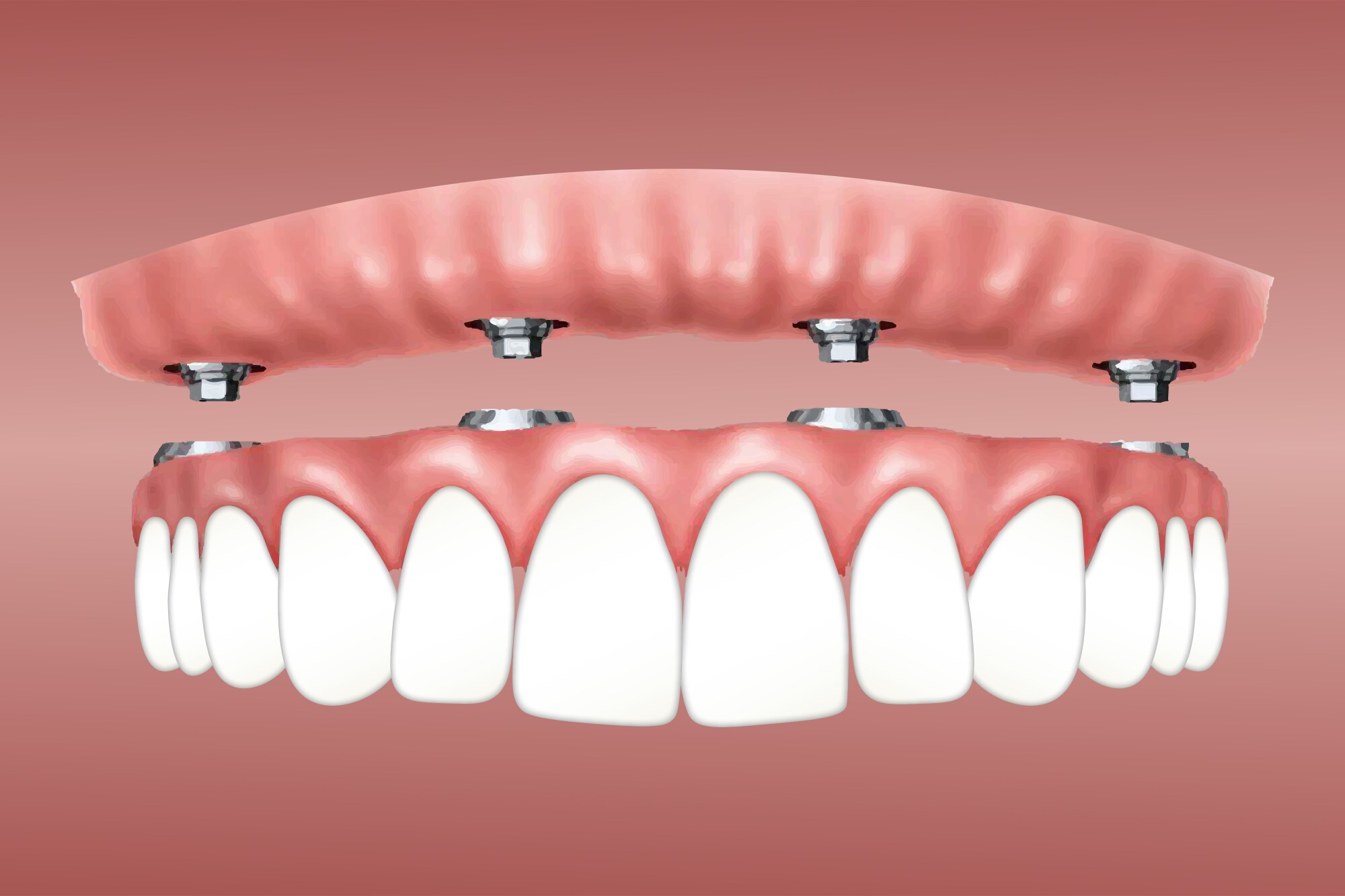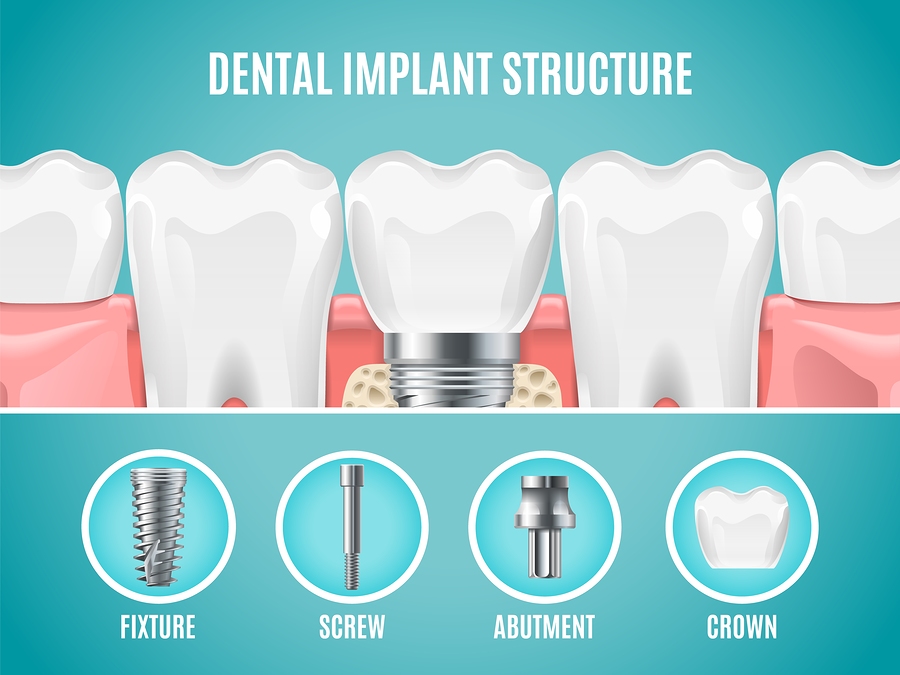Get This Report on Dental Sense
Table of Contents6 Simple Techniques For Dental SenseThe 25-Second Trick For Dental Sense9 Easy Facts About Dental Sense DescribedDental Sense Can Be Fun For Everyone
are clinical tools operatively implanted into the jaw to restore a person's ability to chew or their appearance. They provide support for fabricated (phony) teeth, such as crowns, bridges, or dentures. When a tooth is shed as a result of injury or disease, a person can experience difficulties such as fast bone loss, faulty speech, or adjustments to chewing patterns that cause pain.Dental dental implant systems contain a dental implant body and oral implant joint and may also consist of a joint fixation screw. Wisdom tooth cavity. The dental implant body is surgically put in the jawbone instead of the tooth's root. The oral implant abutment is typically connected to the implant body by the joint fixation screw and expands with gums right into the mouth to support the affixed fabricated teeth
(https://canvas.instructure.com/eportfolios/3460980/home/transform-your-smile-with-wisdom-tooth-cavity-solutions-and-cosmetic-dentistry-services)Framework of The Dental Implant System selecting dental implants, speak to your oral provider about the potential benefits and risks, and whether you are a candidate for the procedure. Things to take into consideration: Your total health is an important element in identifying whether you are a great prospect for oral implants, exactly how long it will require to recover, and how much time the dental implant may remain in place.
Cigarette smoking may affect the recovery process and reduce the lasting success of the dental implant. The healing procedure for the dental implant body may take several months or longer, throughout which time you generally have a short-term abutment in area of the tooth. the oral implant procedure: Carefully follow the dental hygiene instructions provided to you by your oral company.
Not known Facts About Dental Sense
Implant failing can result in the requirement for another surgery to repair or change the implant system. Brings back the capacity to chew Recovers cosmetic appearance Assists keep the jawbone from diminishing due to bone loss Protects the wellness of the bordering bone and gums Helps keep adjacent (close-by) teeth steady Improves lifestyle Damages to bordering natural teeth during implant placement Injury to the surrounding cells during surgery, such as sinus perforation Injury throughout surgical procedure (as an example, fracture of surrounding jawbone) Poor function, such as feeling like the teeth do not attack with each other usually An experience that the tooth is loose or turning in position resulting from an abutment screw loosening Implant body failure (looseness of the implant body) because of systemic infection, which might be more probable in people with unrestrained diabetes because of local infection in bone and gums supporting the dental implant body due to delayed recovery, which might be extra most likely in patients who smoke Problem cleansing the gums around the dental implant, causing bad oral health Untreated periodontal condition Post-surgical numbness due to nerve impingement or damage Constantly notify wellness care providers and imaging technicians that you have dental implants before any kind of magnetic vibration imaging (MRI) or x-ray treatments.
FDA is not familiar with any kind of negative events reported for MRI or x-ray treatments with oral implants. Dental implants systems are generally made from products that comply with global agreement criteria of the International Organization for Standardization (ISO) or ASTM International. These standards have details of what makes a safe material.

A dental implant is a framework that replaces a missing tooth. With screw-like gadgets, the surgeon inserts a dental implant right into the jawbone, and it acts as a support for a man-made tooth, called a crown.
Rumored Buzz on Dental Sense
Some people are not eligible for oral implant surgery. It is for dental cosmetic surgeons to operate on individuals with: intense illnessuncontrollable metabolic diseasebone or soft cells condition or infectionIf these issues are resolved, a person can have the surgical procedure. In, oral doctors avoid operating on people with: If people with any one of the above undertake oral implant surgery, there is a greater threat of the dental implant falling short.

Dental implant surgical procedure is a customized procedure. Give you time to heal. Affix the message and final crown, bridge or denture.
Next off, your surgeon will carefully put the dental implant into your jaw. Finally, your doctor will certainly reposition your gum tissues and close the cut with stitches. If your dental implant is near the front of your mouth, your dental practitioner will certainly make a short-lived tooth for you to wear until you recover. That way, you won't have a gap in your smile while you recuperate.
The smart Trick of Dental Sense That Nobody is Talking About
Your supplier can inform you what to anticipate in your circumstance. Recommended Site Throughout the healing stage, your jawbone must fuse to the dental implant. This procedure, called osseointegration, is important for stability and lasting success. This process can take anywhere from three to 9 months. Sometimes, it may take longer.
Once your implant heals, your dental practitioner can affix the abutment (small adapter blog post) and your final reconstruction (crown, bridge or denture). This generally takes about one hour to finish and might require a second minor surgical procedure. You shouldn't feel any kind of discomfort throughout your dental implant treatment since your provider will make use of medicine to numb your periodontals.